The Vermont Statutes Online
The Statutes below include the actions of the 2025 session of the General Assembly.
NOTE: The Vermont Statutes Online is an unofficial copy of the Vermont Statutes Annotated that is provided as a convenience.
Title 6 : Agriculture
Chapter 028 : Fertilizer, Lime, and Beneficial Substances
(Cite as: 6 V.S.A. § 363)-
§ 363. Definitions
As used in this chapter:
(1) “Agricultural lime” or “agricultural liming material” or “lime” means one or more of the following:
(A) All products with calcium and magnesium compounds that are capable of neutralizing soil acidity and that are intended, sold, or offered for sale for agricultural or plant propagation purposes.
(B) Limestone consisting essentially of calcium carbonate or a combination of calcium carbonate with magnesium carbonate capable of neutralizing soil acidity.
(C) Industrial waste or industrial byproducts that contain calcium; calcium and magnesium; or calcium, magnesium, and potassium in forms that are capable of neutralizing soil acidity and that are intended, sold, or offered for sale for agricultural purposes. For the purposes of this chapter, the terms “agricultural lime,” “lime,” and “agricultural liming material” have the same meaning.
(2) “Beneficial substance” means any substance or compound, other than primary, secondary, and micro plant nutrients (fertilizers), and excluding pesticides, that can be demonstrated by scientific research to be beneficial to one or more species of plants, soil, or media. Beneficial substances include plant amendments, plant biostimulants, plant inoculants, soil amendments, soil inoculants, and other chemical or biological substances beneficial to plants or their growing environment.
(3) “Brand” means a term, design, or trademark used in connection with one or more grades or formulas of fertilizer, beneficial substance, or lime.
(4) “Distribute” means to import, consign, manufacture, produce, compound, mix, blend, offer for sale, sell, barter, or supply a fertilizer, a beneficial substance, or lime in this State through any means, including sales outlets, catalogues, the telephone, the internet, or any electronic means.
(5) “Distributor” means any person who distributes fertilizer, beneficial substance, or lime.
(6) “Exceptional quality biosolid” means a product derived in whole or in part from domestic wastes that have been subjected to and meet the requirements of the following:
(A) a pathogen reduction process established in 40 C.F.R § 503.32(a)(3), (4), (7), or (8);
(B) one of the vector attraction reduction standards established in 40 C.F.R. § 503.33;
(C) the contaminant concentration limits in Vermont Solid Waste Rules § 6-1303(a)(1); and
(D) if derived from a composting process, Vermont Solid Waste Rules § 6-1303(a)(5).
(7) “Fertilizer” means any substance containing one or more recognized plant nutrients that is used for its plant nutrient content and that is designed for use or claimed to have value in promoting plant growth or health, except unprocessed animal or vegetable manures and other products exempted by the Secretary.
(A) A fertilizer material is a substance that either:
(i) contains important quantities of at least one of the primary plant nutrients: nitrogen, phosphorus, or potassium;
(ii) has 85 percent or more of its plant nutrient content present in the form of a single chemical compound; or
(iii) is derived from a plant or chemical residue or byproduct or natural material deposit that has been processed in such a way that its content of plant nutrients has not been materially changed except by purification and concentration.
(B) A mixed fertilizer is a fertilizer containing any combination or mixture of fertilizer materials.
(C) A specialty fertilizer is a fertilizer distributed for nonfarm use.
(D) A bulk fertilizer is a fertilizer distributed in a nonpackaged form.
(8) “Formulation” means a material or mixture of materials prepared according to a particular formula.
(9) “Grade” means the percentage of total nitrogen, available phosphorus or phosphoric acid, and soluble potassium or potash stated in whole numbers in the same terms, order, or percentages as in the guaranteed analysis. Specialty fertilizers and fertilizer materials may be guaranteed in fractional terms. Any grade expressed in fractional terms that is not preceded by a whole number shall be preceded by zero.
(10) “Guaranteed analysis” means:
(A) in reference to fertilizer, the minimum percentages of plant nutrients claimed by the manufacturer or producer of the product in the following order and form: nitrogen, phosphorus, and potash; and
(B) in reference to agricultural lime or agricultural liming material, the minimum percentages of calcium oxide and magnesium oxide or calcium carbonate and the calcium carbonate equivalent, or both, as claimed by the manufacturer or producer of the product.
(11) “Label” means the display of all written, printed, or graphic matter upon the immediate container or a statement accompanying a fertilizer, beneficial substance, or lime.
(12) “Labeling” means all written, printed, or graphic material upon or accompanying any fertilizer, beneficial substance, or lime, including advertisements, brochures, posters, and television and radio announcements used in promoting the sale of the fertilizer, beneficial substance, or lime.
(13) “Official sample” means any sample of fertilizer, beneficial substance, or lime taken by the Secretary.
(14) “Plant amendment” means any substance applied to plants or seeds that is intended to improve growth, yield, product quality, reproduction, flavor, or other favorable characteristics of plants, except for fertilizer, soil amendments, agricultural liming materials, animal and vegetable manures, pesticides, plant regulators, and other materials exempted by rule adopted under this chapter.
(15) “Plant biostimulant” means a substance, microorganism, or mixtures thereof that, when applied to seeds, plants, the rhizosphere, soil, or other growth media act to support a plant’s natural nutrition processes independently of the biostimulant’s nutrient content. The plant biostimulant thereby improves nutrient availability, uptake, or use efficiency; tolerance to abiotic stress; and consequent growth development, quality, or yield.
(16) “Plant inoculant” means a product consisting of microorganisms to be applied to the plant or soil for the purpose of enhancing the availability or uptake of plant nutrients through the root system.
(17) “Percent” or “percentage” means the percentage by weight.
(18) “Primary nutrient” includes nitrogen, available phosphoric acid or phosphorus, and soluble potash or potassium.
(19) “Product” means the name of the fertilizer, beneficial substance, or lime that identifies it as to kind, class, or specific use.
(20) “Registrant” means the person who registers a fertilizer, beneficial substance, or lime under the provisions of this chapter.
(21) “Soil amendment” means a substance or mixture of substance that is intended to improve the physical, chemical, biochemical, biological, or other characteristics of the soil or a distinct form of horticultural growing media used in lieu of soil. “Soil amendment” does not mean fertilizers, agricultural liming materials, unprocessed animal manures, unprocessed vegetable manures, pesticides, and other materials exempted by rule. A compost product from a facility under the jurisdiction of the Agency of Natural Resources’ Solid Waste Management Rules or exceptional quality biosolids shall not be regulated as a soil amendment under this chapter, unless marketed and distributed for the use in the production of an agricultural commodity.
(22) “Soil inoculant” means a microbial product that is applied to colonize the soil to benefit the soil chemistry, biology, or structure.
(23) “Ton” means a net weight of 2,000 pounds avoirdupois.
(24) “Use” includes all purposes for which a fertilizer, beneficial substance, or lime is applied.
(25) “Weight” means the weight of undried material as offered for sale. (Added 1985, No. 126 (Adj. Sess.), § 1; amended 2003, No. 42, § 2, eff. May 27, 2003; 2017, No. 113 (Adj. Sess.), § 17; 2021, No. 41, § 10; 2023, No. 6, § 38, eff. July 1, 2023; 2023, No. 73, § 17, eff. July 1, 2023; 2023, No. 160 (Adj. Sess.), § 6, eff. July 1, 2024; 2025, No. 59, § 1, eff. July 1, 2025.)

